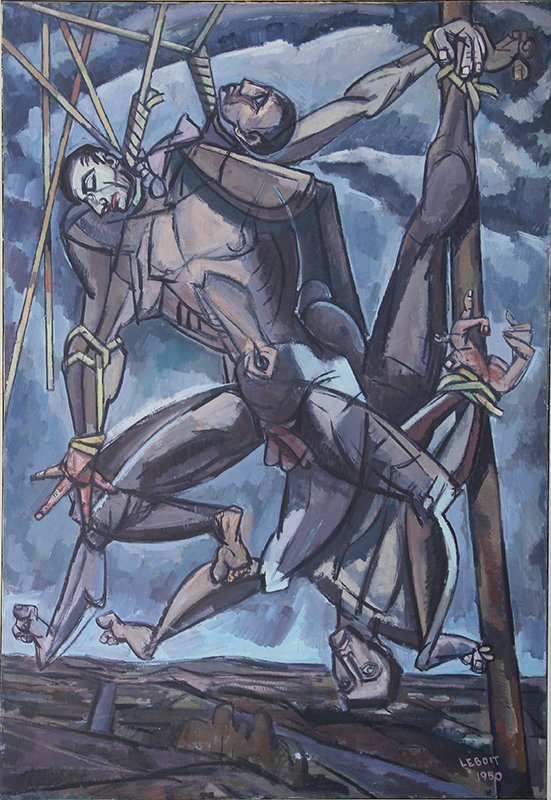
19th, 20th & 21st Century Fine Prints
707-546-7352 · fax 707-546-7924 · web: www.annexgalleries.com · email: artannex@aol.com
The Lynching by Joseph Leboit



The Lynching
Joseph Leboit
The Lynching
Joseph Leboit
1907 - 2002 (biography)During World War II, Joseph Leboit was selected for the Graphics Division of the WPA, and became one of the directors of 'Artists for Victory', an organization composed of visual artists wanting to employ their skills to help with the war effort. He organized a national exhibit entitled America in the War, which toured throughout the U.S. Leboit contributed a series of Holocaust woodcuts for the exhibit, one of which ("Herrenvolk") is in the Library of Congress. His work expanded to the New York publication PM, for which he created political cartoons, illustrations, and charts, and maps. This work led him to commissions creating maps for the Russian War Relief and the Junior Red Cross.
Following the war and the closing of the PM, Leboit undertook advanced studies in psychology, in addition to continuing to paint. He became a certified psychologist and for twenty-five years served as director of the Advanced Center for Psychotherapy, a non-profit mental health clinic, which he co-founded. He wrote a variety of monographs on the subject of psychology and co-wrote a text still used in the field of psychotherapy today.
Joseph Leboit began working on this powerful, large oil painting of three hanged and bound men in 1938 when he worked for the Works Progress Administration (WPA). Leboit, who had majored in art and psychology, was Jewish and was a social activist who fought for the rights of miners and other labor forces of all races and religious beliefs during the Depression. His observations of violent anti-Semitic sentiment in Europe and the U.S., racism, and the rapidly spreading second World War, were reflected in much of his early work, and in his representations of wartime refugees especially there is a sense of his personal agony, in being unable to set right what has been knocked askew. Leboit didn’t finish this painting until 1950.
Leboit spares nothing in this portrayal of the brutal, haphazard symbology of lynching, using three young men - all naked - as markers of truth laid bare. It is a visual reckoning, the distant, bleak landscape recalling Goya’s etching “And There’s Nothing to Be Done” from the Disasters of War series, as well as the twisting, agonized Cubist masterpiece by Picasso, “Guernica.” As with both of these artists, Leboit aims to define the senselessness of war, prejudice, and struggle within the context of visual communication, finding a sliver of truth in composition, color, and the simple hope of reminding the viewer that, no matter what their grief or agony, they are not alone, and there is always more to be done.



